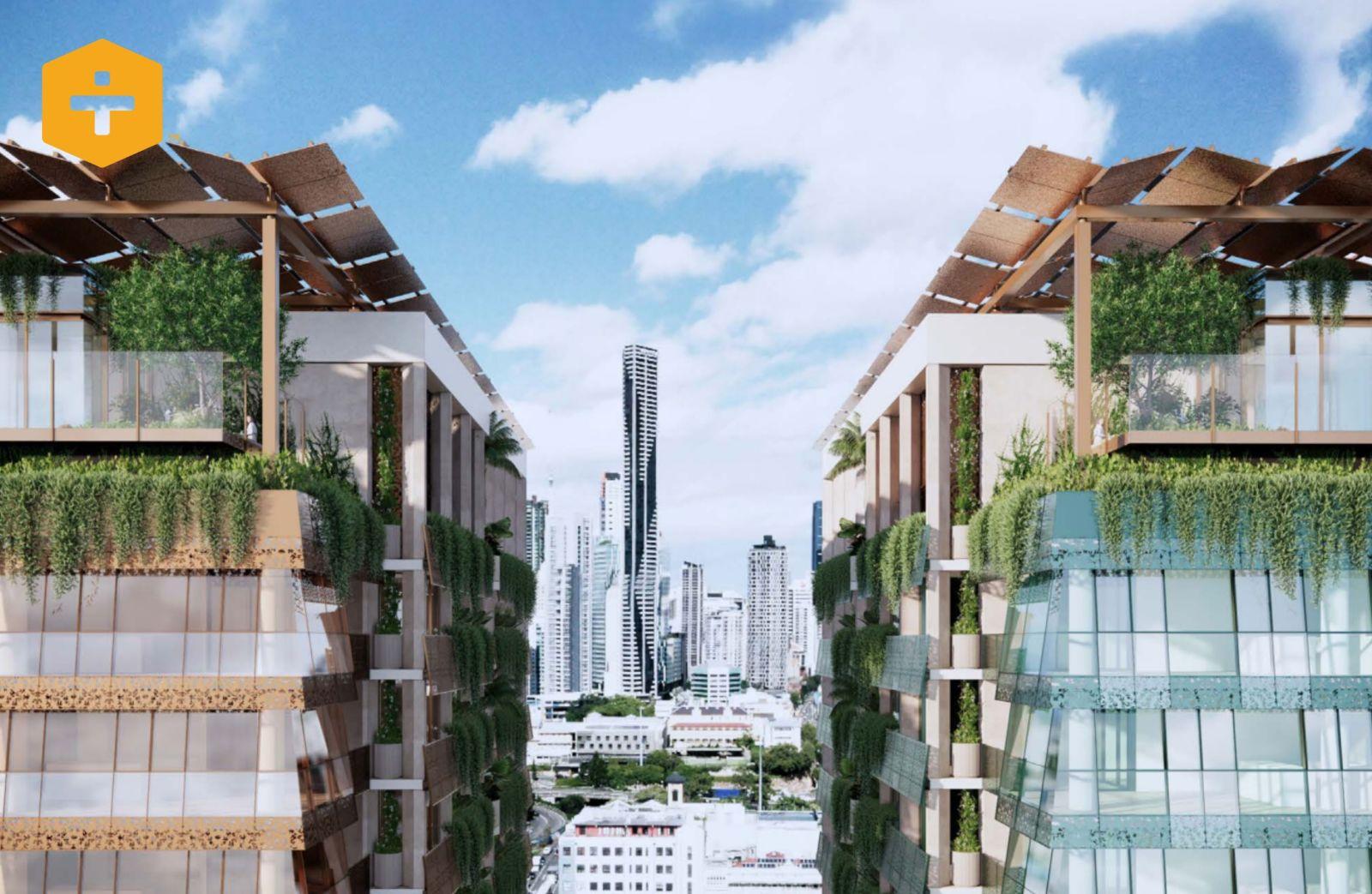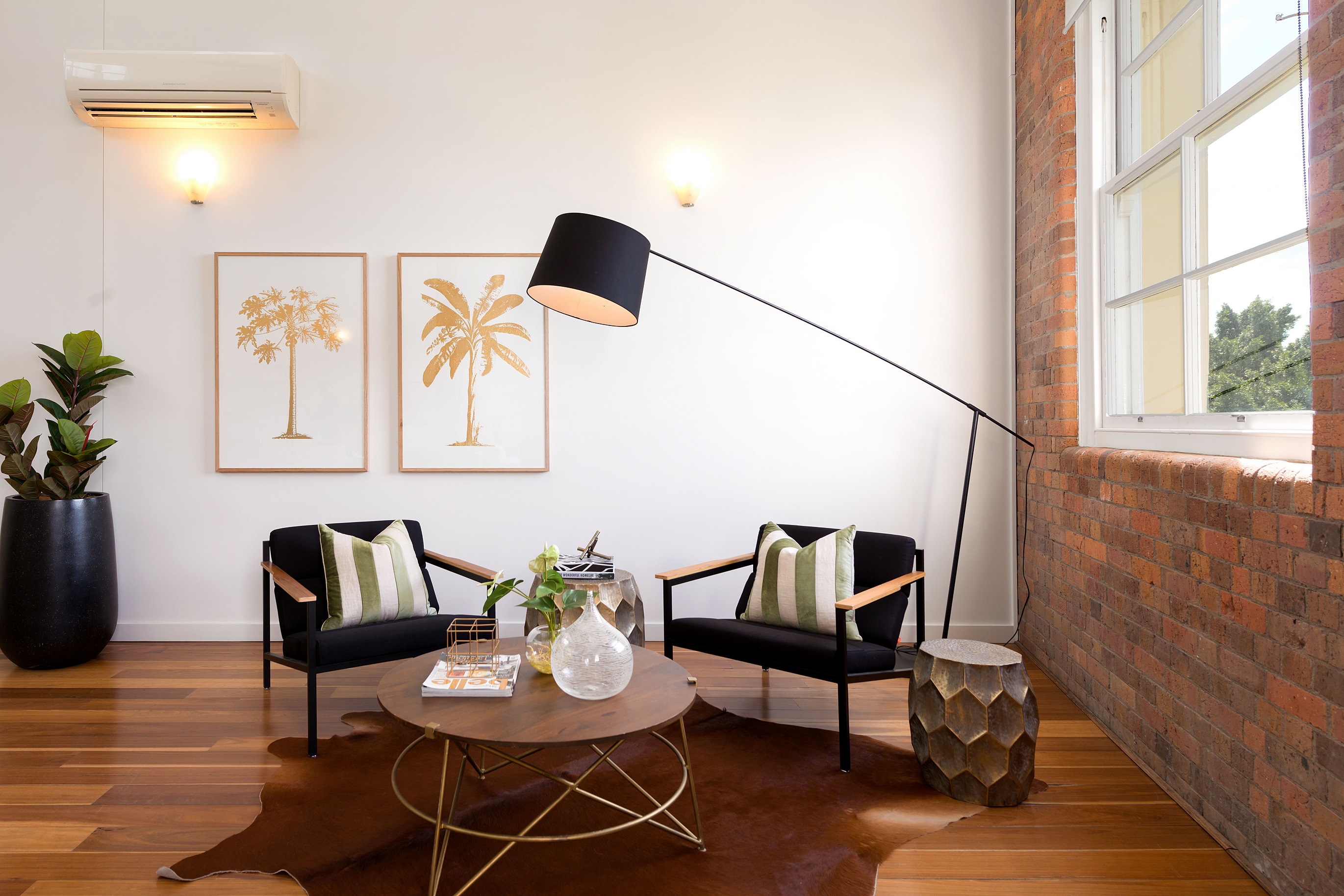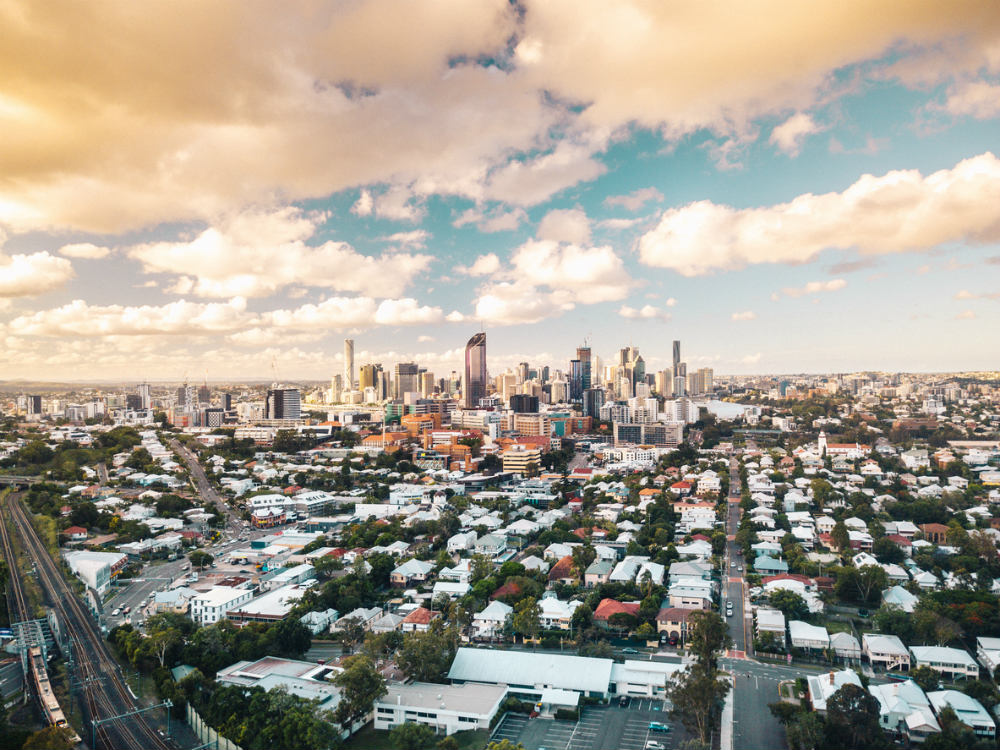Tying the two towers together, a “bridge of green” dubbed the Quandong Common has been integrated into the design featuring dense landscaping as a natural vista for the communal facilities.
“The development provides a memorable marker to the inner-city skyline, with vertical landscaping dispersed generously and use of contrasting colour palettes between the two towers,” the planning documents said.
“The centrepiece of the development, a voluminous city room on Morgan Street crafts a publicly accessible space with vibrant facades, sub-tropical gardens, and a ‘heroic’ quandong tree.
“This entry threshold acts as a gathering place where residents, visitors, workers, and the broader community can come together to engage in the intensity of urban life all in the context of a subtropical garden space.”
Most significantly, however, the development proposal is a sizeable addition to Brisbane’s rapidly expanding build-to-rent pipeline and would accommodate a “vertical neighbourhood” of more than 1000 people.
EG backs ‘sustainable urban growth’
According to the planning report submitted in support of EG’s proposal, significant events in recent years had prompted it to take a new development approach to the site.
“Since receipt of the two approvals, significant events have occurred including Covid-19, population growth and confirmation of Brisbane as the host city for the 2032 Olympics,” it said. “These significant events have stimulated changes to policy direction for planning and development of Brisbane.
“Recent federal, national and local strategic policies are expressing a consistent direction whereby increased height and density is supported in appropriate locations, particularly to address a critical economic and community need for housing supply.”
The report said the proposal was “aligned with this emerging policy direction”.
EG development director Grant Flannigan says the plans also reflect the fund manager’s “commitment to both quality living and sustainable urban growth”.
“We are confident that our proposed plans address the pressing demand for diverse housing and seamlessly accommodate the emerging activity within Fortitude Valley.”
He told The Urban Developer the Valley was “perfectly located” for build-to-rent due to its connectivity to a vibrant neighbourhood and proximity to the CBD.
“EG has a strong focus on build-to-rent until the foreseeable future, with a focus on affordable rental to help alleviate the current rental challenges faced by Australians,” he says.
The Fortitude Valley twin tower proposal is among seven build-to-rent projects EG has in the planning/pre-planning phase across its $3.9-billion development pipeline.
Established in 2000, the fund manager has more than $5.1 billion in assets under management.
Overall, its plans for the site spanning 801 Ann Street and 80 McLachlan Street include 168 studio, 98 one-bedroom, 247 two-bedroom and 38 three-bedroom apartments across the two towers.
An array of communal amenities also are proposed, such as work-from-home spaces, sky terraces, gyms, a wellness spa, library, podium park and rooftop recreation terraces with a pool, spa area, sun deck, dining room and kitchen and BBQ areas.
With a total of 9452sq m of outdoor space, the development also “provides significant opportunities to rewild a highly urbanised location of Brisbane”, the documents said.
As well, 521 carparking and 689 bicycle parking spaces would be provided across four basement and three podium levels.
James Street gentrification ushers new era
Brisbane urban planning identity Ross Elliott says the EG proposal reflects the influence the James Street precinct and 25-plus years of gentrification have had on the inner-city area.
“It was rundown shitsville,” he says. “The extent of the turnaround is nothing short of remarkable.
“The Valley, New Farm and Teneriffe … it’s the new Clayfield and Ascot.
“Nearly one in four households in New Farm has an income of $4000 a week or more. So these are very much upmarket places now and well and truly gentrified.
“And what we’re seeing in development at the moment is that the focus is turning towards the high-end of the market because that is still feasible.”
Putting on his hat as Suburban Futures director and chair of the Brisbane Lord Mayor’s Better Suburbs Initiative, Elliott says “exactly what we’ve done with the inner-city is exactly what we need to do in some suburban centres”.
However, he concedes: “It's difficult.
“In a suburban location, the challenge at the moment is that the build cost is the same and your realisation, whether you're selling or renting, is significantly less.
“So it’s really hard to make things work on any acceptable level of risk.”
Meanwhile, he says, with plans such as EG’s Fortitude Valley proposal being lodged “there just doesn't seem to be any shortage of appetite for development in the inner-city”.
But then, philosophically, he adds: “Really we should be grateful for any housing product at the moment.
“Let’s not be picky … if it satisfies that upper end, then potentially it frees up other parts of the market—hopefully.”
*This post was originally published on https://www.theurbandeveloper.com/articles/eg-fortitude-valley-mclachlan-tower





